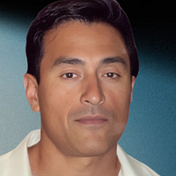Exploring Microstructural Brain Changes with Dr. Andrew Gomes and DTI Technology

Advances in neuroscience have dramatically enhanced our understanding of the human brain, yet many of its microstructural changes remain difficult to detect. Dr. Andrew Gomes is at the forefront of using diffusion tensor imaging (DTI) technology to explore these subtle yet critical alterations. His work provides new insights into how the brain adapts, deteriorates, or recovers in response to injury, disease, and developmental conditions.
DTI is a specialized form of MRI that maps the diffusion of water molecules in brain tissue, allowing researchers to visualize the integrity of white matter pathways. Unlike traditional imaging, which often identifies gross structural abnormalities, DTI can detect changes at a microscopic level. This capability is crucial for understanding conditions such as traumatic brain injury, neurodegenerative diseases, and cognitive disorders, where early microstructural alterations can have profound long-term effects.
Dr. Andrew Gomes emphasizes that interpreting DTI data requires both technical precision and clinical insight. By combining imaging results with cognitive assessments and patient histories, he can identify patterns that reveal how neural networks are affected and predict potential functional outcomes. This integrative approach enables more accurate diagnoses and informs tailored intervention strategies, potentially improving patient recovery and quality of life.
One of the most compelling aspects of Dr. Gomes’ research is its potential for early detection. Identifying microstructural changes before symptoms manifest allows for proactive treatment, which can slow disease progression or enhance rehabilitation outcomes. For example, in cases of mild traumatic brain injury, subtle disruptions in white matter may precede cognitive deficits, providing a window of opportunity for timely therapeutic intervention.
Beyond clinical applications, Dr. Gomes’ work contributes to a broader understanding of brain plasticity. By examining how microstructural pathways reorganize after injury or during learning, his research sheds light on the brain’s remarkable ability to adapt. These findings have implications not only for patient care but also for developing new strategies in education, mental health, and cognitive enhancement.
Through his pioneering use of DTI technology, Dr. Andrew Gomes is uncovering the hidden intricacies of the brain. His research is opening new frontiers in neuroscience, emphasizing that understanding microstructural changes is essential for both advancing medical knowledge and improving human health.
